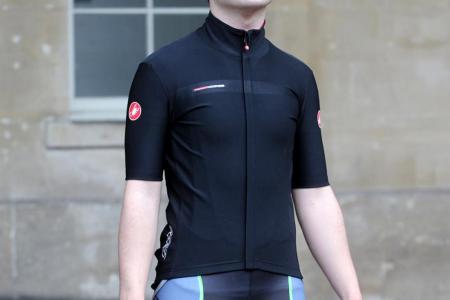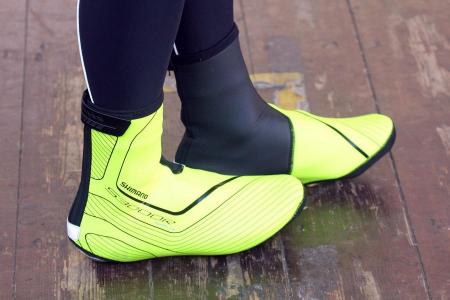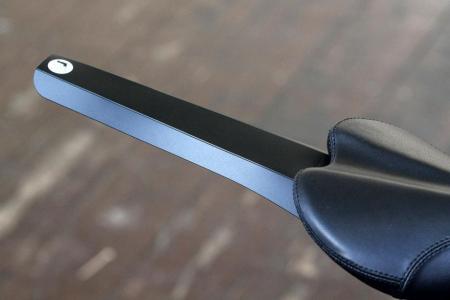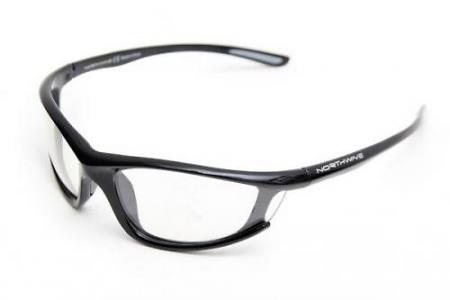- News
- Reviews
- Bikes
- Accessories
- Accessories - misc
- Computer mounts
- Bags
- Bar ends
- Bike bags & cases
- Bottle cages
- Bottles
- Cameras
- Car racks
- Child seats
- Computers
- Glasses
- GPS units
- Helmets
- Lights - front
- Lights - rear
- Lights - sets
- Locks
- Mirrors
- Mudguards
- Racks
- Pumps & CO2 inflators
- Puncture kits
- Reflectives
- Smart watches
- Stands and racks
- Trailers
- Clothing
- Components
- Bar tape & grips
- Bottom brackets
- Brake & gear cables
- Brake & STI levers
- Brake pads & spares
- Brakes
- Cassettes & freewheels
- Chains
- Chainsets & chainrings
- Derailleurs - front
- Derailleurs - rear
- Forks
- Gear levers & shifters
- Groupsets
- Handlebars & extensions
- Headsets
- Hubs
- Inner tubes
- Pedals
- Quick releases & skewers
- Saddles
- Seatposts
- Stems
- Wheels
- Tyres
- Health, fitness and nutrition
- Tools and workshop
- Miscellaneous
- Tubeless valves
- Buyers Guides
- Features
- Forum
- Recommends
- Podcast
feature
 Survival tips for cycling in the rain
Survival tips for cycling in the rain 9 top survival tips for cycling in the rain — essential kit and equipment choices to conquer the wettest rides
No one really enjoys riding in the rain. Or do they? One thing's for sure, it's unavoidable in the UK if you want to keep cycling through the winter.
If you’re keen to not let the rain stop you cycling, here are some tips that will help you survive, and possibly enjoy, riding in the rain this winter.
1. Waterproof jacket and tights
An absolute essential if you want to go cycling in the rain is a waterproof jacket. Fabric technology and garment design have come on leaps and bounds in the past few decades (Gore-Tex first introduced its waterproof jacket 30 years ago) and there’s now a huge choice of rain jackets that will keep you from getting soaked through, at a range of prices to suit different budgets.
The challenge with waterproof jackets for cycling is not just keeping the rain out, but providing the necessary breathability to allow the heat your body generated through exercise to escape. Early waterproof jackets were known as ‘boil in the bag’ affairs, because though they might have kept the rain out, you would get soaked on the inside from your own sweat. Not ideal.
Fabric technology has really improved the balance of rain protection and breathability and modern cycling jackets are very good at dealing with the tricky task of keeping a hard-working cyclist dry, and most not offer a fine balance of rain protection and body heat management.
- The best waterproof cycling clothing
In recent years, we’ve seen a new solution to tackling riding in wet weather. The now iconic Castelli Gabba jacket is the best example of a new approach to dressing for wet rides. It's made from a waterproof fabric with a really close fit and good breathability. It's not completely waterproof, the seams aren't taped, but it's ideal for showers rather than prolonged downpours, and it'll keep you warm to. The Gabba has really caught on, and now quite a few manufacturers offering similar tops now.
While it’s obviously important to keep your top dry when it’s raining, you also need to consider your legs. Cycling in the cold and wet makes it harder for the muscles to operate at their optimum, and your performance can suffer as a result. Keeping your legs wrapped then up is very sensible.
Thin Lycra doesn’t offer much rain protection but there’s a new breed of winter tights that are treated with a water repellent finish that will keep your legs drier for longer, such as Sportful’s NoRain and Castelli’s NanoFlex tights and leg warmers.
- The best cycling clothing to keep you warm this winter
For commuting a pair of waterproof trousers might be a more suitable option, and can be worn over regular cycling or casual clothing, as and when needed. Fit needs to be good, you don’t want them flapping in the wind or potentially getting caught in the drivetrain.
2. Dry feet - overshoes, waterproof socks and winter boots
There’s no avoiding it, your feet are going to get wet: they’re right in the firing line of spray from the front wheel after all. Invest in a pair of waterproof overshoes and you should be able to keep your feet a lot drier for longer.
- The best cycling overshoes — what to look for and 12 great choices
Neoprene overshoes are a good option. They don’t keep the rain out but do prevent your feet getting cold when they are wet. For more protection look for an overshoe treated with a Gore-Tex finish or similar membrane for really wet conditions.
Overshoes are available to fit most types of shoe, road and mountain bike soles are catered for. They also double up as extra insulation when the mercury drops, and they're reasonably affordable.
The other choice, and one that many people combine with overshoes or winter boots is a pair of waterproof socks. SealSkins is the most well-known maker of waterproof socks, but others are available too. They’re thicker than regular socks so you need to check you can fit them with your shoes.
- Essential wet weather cycle clothing and gear
The best wet weather protection is probably a dedicated winter boot. Like a regular cycling shoe with a beefed up waterproof upper and some sort of membrane liner, they are the best choice for ensuring your feet stay dry and warm. They’re a more expensive option than overshoes but if you plan to do a lot of cycling through the winter, the investment might be justifiable. If you’re just cycling once or twice a week, overshoes are probably better value for money.
3. Waterproof gloves
What’s worse, cold feet or cold hands? Neither are very pleasant, so right up there with protecting your feet should be investing in some gloves that will keep your hands dry. When your hands get wet they get cold a lot quicker, and numb hands are very unpleasant - I’ve cut rides short when I’ve lost all feeling in my hands before.
The choice for waterproof gloves varies hugely, from neoprene gloves that retain warmth even when wet. Bigger winter gloves feature a waterproof lining or a soft shell construction, but they can be bulky or limit dexterity.
One of my favourite tricks for long rides when I know it’s going to be wet is to take a spare pair of gloves sealed in a plastic bag and change halfway round the route.
4. Keep your head dry
A dry head is a happy head. Your head is obviously first in line to get pelted by the rain, and a well-ventilated lightweight helmet doesn’t offer much shelter. Wearing a cap underneath it, or a cover over the top, will keep your noggin dry.
A cotton cycling cap offers some protection, with the peak serving as a useful gutter to direct rain from your eyes. Many clothing companies now make cycling caps from waterproof fabrics, which work brilliantly when it’s raining really heavily, but breathability can suffer from some of them.
Another option, and probably one that will appeal more to commuters and city cyclists, is a helmet cover. They’re designed to fit right over the entire helmet with elastic holding it in place. They’re usually covered with reflective details so serve an additional purpose of helping you to stand out on the dark unlit roads.
The other option is one of the aero helmets with all the air vents blocked in, or closeable vents, such as the Bell Star I tested last year. Close the vents to keep cold air and rain out.
5. Mudguards
Like or loathe them, mudguards are designed to protect you from road spray from the wheels, and can make a huge difference to preventing you getting soaked through. Mudguards need to be embraced for winter road cycling, once you've tried them, you'll never go back.
- Buyer’s guide: The best mudguards to keep you dry when the weather's not
You might get wet from the falling rain, but mudguards will prevent your feet, legs and bum getting a soaking when splashing through puddles. They also keep all the mud and other road dirt off your bike and body, so you don’t look like you’ve been out mountain biking when you get home, covered from head to toe in mud.
Mudguards vary from simple plastic clip-on fenders, which offer limited protection but will fit any bike quickly and easily, to proper full-length mudguards. These offer the best protection, as they wrap much more of the wheel and track the front wheel when steering. Your bike will need mounts and adequate clearance between the tyre and frame to take them, though.
6. Glasses
It helps to be able to see where you're going, and when it's raining heavily and water is being sprayed up from the road, your vision can easily become, well a bit waterlogged.
- The best cheap cycling sunglasses
A pair of cycling glasses with clear lenses are a really good way of shielding your eyes when cycling in the rain. They also keep mud and grit out of your eyes, especially handy if riding on a wheel. Some glasses have interchangeable lenses and a yellow tint can boost contrast in low light.
7. Be seen - fit some lights
Even if you’re riding during the day, rainy weather is often accompanied by dark clouds and low light levels, and that can mean restricted visibility.
A set of small blinking LED lights, either just a rear one of a front and rear set, can ensure that other road users stand a better chance of seeing you in murky weather.
- Your guide to the best front lights for cycling + beam comparison engine
8. Avoid punctures - change your tyres
Getting a puncture isn’t much fun but it’s even less fun when the rain is pelting down on you. Swap your lightweight race tyres for durable tyres with a puncture belt and you’ll lessen the risk of getting a puncture.
- The best tyres to keep you cycling through winter
You’re more likely to puncture in the rain because debris gets washed out of the gutter into the road, and water acts as an astonishingly good lubricant for sharp flint and glasses to slice through a bicycle tyre. That’s why I prefer to ride tubeless tyres through the winter.
Some tyres are made for the winter with a different rubber compound, intended to provide increased traction on wet roads. Ignore the tread pattern on a bicycle tyre, it makes no difference. Consider fitting the widest possible tyre your bicycle will accommodate. You can run lower pressures and benefit from a larger contact patch, increasing the traction.
Got any tips we've missed? Stick 'em down in the comments below and they might make the next update.
David worked on the road.cc tech team from 2012-2020. Previously he was editor of Bikemagic.com and before that staff writer at RCUK. He's a seasoned cyclist of all disciplines, from road to mountain biking, touring to cyclo-cross, he only wishes he had time to ride them all. He's mildly competitive, though he'll never admit it, and is a frequent road racer but is too lazy to do really well. He currently resides in the Cotswolds, and you can now find him over on his own YouTube channel David Arthur - Just Ride Bikes.
Latest Comments
- AidanR 1 sec ago
I´d be surprised if he wasn´t deemed domiciled from 2017 (when the 15 of 20 year rule was brought in), unless he had a few years of non-UK...
- hawkinspeter 1 hour 8 min ago
Typical - they just (Time)lord it over us
- mark1a 2 hours 5 min ago
The article is subtitled "the 10 bikes we're most excited for in 2025", I'm guessing that the normal everyday titanium bikes for normal riders are...
- Jogle 2 hours 12 min ago
Lovely bloke indeed. He didn't have his photo taken when he was found guilty of coercively controlling his ex-girlfriend though. https://www.edp24...
- hawkinspeter 2 hours 38 min ago
No - they're a more recent American import. We (UK) got them in 1876 and Europe waited until 1948 to get them (more specifically, in Stupinigi,...
- wtjs 3 hours 15 min ago
I've only ever snapped up Shimano components Subtle and subliminal 'pasta cranks' propaganda from HP!
- wtjs 3 hours 19 min ago
I wonder if Cheshire police officers are of the opinion that the driver is entitled to ram a cyclist off the road if he 'takes the lane' in those...
- David9694 6 hours 32 min ago
Driver warned to take his meds after 'spectacular crash'...
- S.E. 7 hours 1 min ago
But limiting high gear wouldn't really solve all the crashes in sprints, narrow roads, etc. Someone needs to do serious studies and statistics on...







Add new comment
47 comments
I found last seasons team rain jackets/caps a good solution in relation of function versus price. The Rapha race cap is quite nice although pricey. The thing I hate the most are wet feet.
I've only used these when I've worked in Norwegian fabrication yards, the changing rooms have racks of them to dry your work boots, they are great and I imagine they'd dry a pair of cycle shoes in no time.
http://www.clasohlson.com/uk/Shoe-Dryer/18-4300
There is a point of view that says you should spend only a reasonable sum to fend off the worst of the weather and after that, just relax and accept that some bits of you are going to get wet. Once you have accepted your fate it no longer seems to be a huge problem. After all, if you are wet you can't get any wetter.
Mudguards AND mudflaps, especially at the front.
The most important item of clothing for daily commuting is a complete change of clothes in the bottom draw of your office desk.
Remember though that it doesn't rain heavily that often (in the "drench you to the skin" sense). In one year of daily commuting I only needed to use my change of clothes once.
I fond in one year of London commuting that
Avoid manhole covers like they are trying to kill you.
White lines take on a lethality of their own too!
For me, it's not the riding in the rain that puts me off, it's the faffing around with the wet bike, kit etc when I get home that is the issue. Trying to get shoes, overshoes, gloves, helmet pads etc dry in time for the next ride is also an issue which limits my riding in bad weather. Of course, if I was made of money, I'd just have seven sets of everything, but I'm not!
Any neat tricks for this? Atm I use the old newspaper in the shoes, put them under a radiator, but it still takes ages.
Need to get myself a helmet cover I think.
Not really, it just sucks. I've bought a pair of Northwave goretex winter boots this year. They're bone dry on the inside riding on wet roads, but I haven't been in a deluge yet. If the rain stays out of the tops that may fix the drying shoe problem at least.
The breaking point was last deluge I rode home in... my shoes absolutely stank
I don't carry overshoes as a matter of routine, they are bulky and grubby and make everything in my bag dirty. So if I get caught in the rain without them I resort to a couple of bread bags that sit, tightly folded in an outside pocket. They take up almost no room, cost nothing and can be pulled over your shoes, held up with elastic bands. Your cleats still work well, pushing through the thin plastic and when you get home, chuck 'em in the bin.
Fashionistas please note - you may draw the line at some of the more colourful designs but Hovis bags are more subtle.
Febreeze FTW. Or Ace bleach if it's really bad.
The North Waves are brilliant - even if you submerge them in standing water.
Fake news! I have it on authority from several posters in my local newspaper comment fora that no-one cycles in the wet and the cold - these people sound like they have great knowledge and experience of cycling.
I have a dehumidifier
Good point... I also have one of those. May need to repurpose it after wet rides!
Aga
Must admit I get stuck with the newspaper trick too, but I've a set of boot driers for my outdoor/snowboard boots which helps speed things up but still takes overnight. And if its really wet, boots still needs stuffing with newspaper for an hour or so first to remove the worst of the water.
Some friends I know have one of these that seems to work well though and much quicker. I'm quite tempted to get one too.
I have a pair of Endura MT500 tights & they have a ruberised panel on the shins, great for keeping road spray off your lower legs.
Glasses I struggle with though, find them worse than none in wet weather or in fog like today they will mist up from the outside as there's so much moisture in the air.
Pages